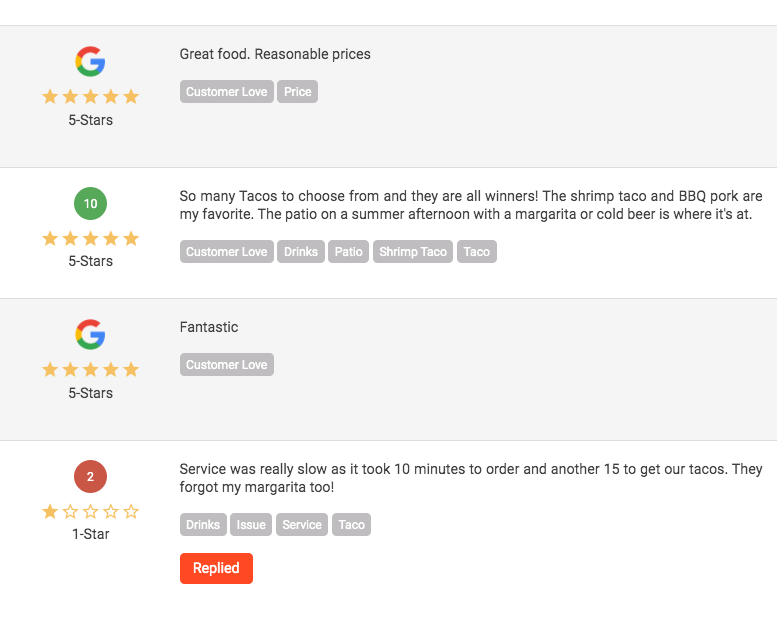Think about your favorite brand. Why do you love it so much?
Chances are, it has a lot to do with the experiences you’ve had as you’ve interacted with it online or in person.
Maybe the business has terrific customer service, and they’re always friendly and excited to help with anything you need. Perhaps they have a fantastic website that’s easy to navigate and feels like their design sets the latest trend. Or maybe you just love the products you receive in the mail and their sleek packaging.
Every one of these elements helps make up the customer experience (CX).
If you have an exceptional experience, you’ll naturally want to spread the word and promote the business’s products or services. However, if you have a rotten experience with a brand, you might tell everyone in your circle to avoid doing business with the company at all costs.
SuperOffice surveyed nearly 2,000 professionals and found that the top business priority for them over the next five years was (can you guess?) customer experience. It came out ahead of pricing and products, the two priorities that secured top positions in the past.
Today, we’re covering the basics of CX to give you a comprehensive overview of what it is and why it’s crucial for your business’s future success.
What is Customer Experience?
In a nutshell, customer experience is how an individual perceives your brand. It’s the sum of every interaction a customer has with your brand – including customer service, all forms of communication, online shopping experiences, and the quality of your products and services.
Every touchpoint along a customer’s journey forms their overall perception of your brand and business. It shapes how they view you and communicate with others about you.
Everyone in your business plays a role in CX. Your marketing, advertising, web design, graphics, photography, customer support, finances, social media, blog, and email correspondence all impact how customers view your brand.
Why Does Customer Experience Matter?
Creating a great customer experience lets you move your target consumers effectively through the buyer’s journey. The buyer’s journey includes attracting, engaging, and then delighting people so they become promoters of your brand (your ultimate goal). Customer experience plays into every vital part of your marketing and sales strategies.

When you create a positive experience for your customers, you’ll gain their loyalty, which ultimately helps boost revenue. Not only will satisfied customers come back to you for more, but they’ll tell their friends, family, and colleagues about you.
95% of consumers who have a “very good” customer experience are likely to recommend the company to others, and 94% are “very likely” to repurchase from them.
Word-of-mouth marketing (WOMM) is also the most trusted form of marketing, trusted by 86% of consumers. And the customers you acquire through WOMM spend 200% more, on average, and make twice as many referrals. Building a group of strong advocates for your brand is one of the most effective ways to build your business and reputation.
We could go on, but you get the picture. Word-of-mouth marketing is an essential tool to have in your toolbox.
How is Customer Experience Different from Customer Service?
These two terms are similar and can be easily confused, but it’s essential to distinguish the differences between them.
As we’ve already mentioned, customer experience encompasses the entire customer journey – from the moment a consumer first hears about your brand to the last interaction they have with you. It includes direct and indirect interactions. An example of a direct interaction is talking to someone via live chat on their business website. An indirect interaction could be clicking on a brand’s Facebook Ad.
Customer experience involves three main components:
- Customer service
- Design (the journey and feelings your brand creates)
- Technology (your products)

Therefore, customer service falls under the umbrella of the customer experience. It’s one part of the journey.
Customer service only involves the direct and personal interactions you have with your customers. It could include chatting online, talking on the phone, or offering support via email. Whenever you offer a customer help or advice or communicate with them through a marketing channel about a product or service, you’re providing customer service.
What is Customer Experience Management?
Customer experience management (CXM) involves surveying, measuring, analyzing, and improving the customer experience. CXM tracks every customer touchpoint so you can enhance microinteractions (to accomplish single tasks) and brand relationships with customers.
To enhance customer satisfaction, start by evaluating how your business is currently performing. Then create effective strategies for improving small interactions with customers to create a more valuable and engaging overall experience for them.
CXM involves enhancing interactions for prospective, new, and loyal customers. To create personalized customer journeys, you must address customers at each stage of the buyer’s journey: awareness, consideration, and decision.
Consumers at different stages will have different needs. For example, someone in the awareness stage will be seeking a reliable, trustworthy company with excellent customer service and quality products. Someone who has purchased from you several times in the past may only be interested in new, exciting offers that add more value than they’ve received previously. In other words, different people will have different expectations for you to fulfill.
CXM addresses consumers at every stage and at every touchpoint to create a truly customer-centric experience at all stages. By prioritizing CX down to single microinteractions, you can build greater trust and loyalty with consumers, build your reputation, and create positive brand awareness.
What Makes a Great Customer Experience?
To create an exceptional customer experience, you need to shape your customers’ perception of your business intentionally. You want your customers to perceive every interaction with your brand as positive and delightful, right? To do so, you must meet their needs by deeply understanding who they are and what they’re looking for. Only then can you provide the best value.
A great customer experience is
- Consistent
- Personalized
- Relevant
- Timely
- Straightforward
- Simple
- Effortless
- Memorable
- Seamless
- Engaging
5 Ways to Create a Great CX Strategy
Less than 50% of all companies deliver good or excellent customer service (SuperOffice). Here are some tips to help your business stand out, provide a great CX, and build a community of long-term, loyal customers.
1. Articulate Your Core Values and Vision

Before you can define your target audience and customer journey, you need to know your core values and ensure everyone in your organization is on the same page and moving in the same direction.
You can create your company vision by writing down your core values. These will act as guiding principles for your entire business to follow. You can implement them into employee training, language and communications, and the customer experience.
2. Create Buyer Personas
Before you can build a customer journey, you need to know who you’re targeting. You may have one or more primary types of customers. You can create specific audience segments to target by developing buyer personas – or customer profiles – to represent your ideal customers.
Base these profiles on real data and research. The more detail you can add to your buyer persona profiles, the better. Look at your current list of contacts for trends.
Here are some points you should include as you fill out your buyer personas:
- Demographics (age, sex, location, income)
- Background information (career, family, professional goals)
- Other traits (personality, viewpoints)
- Communication preferences
- Challenges
- Pain points
- Goals
- How you can help solve their problem
By creating profiles of your ideal customers, you can better connect and empathize with them and gain a deeper understanding of their current situation. Connecting emotionally with your customers will allow you to create a much more authentic and personal customer experience.
3. Create a Customer Journey Map
A journey map is a visual representation of the path your customer takes – from their first interaction with your business to where they are today in their buyer’s journey. Recording every touchpoint and forming a holistic (360-degree) view of your customer will help you understand where they’re coming from and where they want to go next.
Mapping out customer journeys will give you valuable insight into the pain points you should address. It can also show you where you have opportunities to provide more value. Journey maps let you step into your customers’ shoes, giving you a realistic perspective so you can create a great CX.
4. Ask for Feedback

Listening is a superpower. Ask your customers for feedback to hear firsthand where your brand can improve and what you’re already doing well. Customer feedback offers your business context, a broader view, clarity, and action steps for moving forward.
Businesses that collect customer feedback, listen intently, and implement strategies to improve are much more likely to succeed than those that don’t. You can ask your customers for feedback in person, via text or email, or online.
Check out our previous article, “How One Business Made a Mess of Masking,” to see what can happen if you don’t listen carefully, communicate clearly, and monitor your customer feedback.
5. Identify Where to Improve

Once you get to this stage, you should understand where you need to address pain points along the customer journey to enhance the overall experience. Next, you can implement the proper tools and training in different departments throughout your organization to make necessary improvements.
How Do You Measure Customer Experience?
Here are the most common and effective ways to measure CX in your business.
- Conduct surveys: Talking directly to your customers for feedback
- Calculate your net promoter score (NPS): How likely someone is to recommend a brand to their friends or family
- Calculate your customer effort score (CES): How much effort customers must exert to reach their goals (e.g., resolving a problem, ordering, returning products)
- Review customer journey analytics: Analyzing all touchpoints (social media, website, ads, in-person events, reviews, etc.) to see where you can improve
- Determine your customer churn rate: The percentage of customers or subscribers who cancel their subscriptions during a specific period
- Measure customer satisfaction scores (CSAT): A survey you send immediately after a purchase or interaction to measure customer satisfaction
After analyzing your results, you can optimize your customers’ experiences to make them happy and keep them coming back for more.
Ready to Create an Exceptional Customer Experience?
A vital part of building a loyal audience is getting the feedback you need to implement the right changes in your business. You also need to share the good feedback you receive with potential customers looking for businesses like yours. Remember what we said earlier about the power of WOMM?
GatherUp can help you build a continuous cycle of exceptional reviews and happy customers – to retain loyal followers and attract new ones. Boost your sales, reputation, and overall success by listening carefully to customers and improving their interactions with your brand.
Comments are closed.